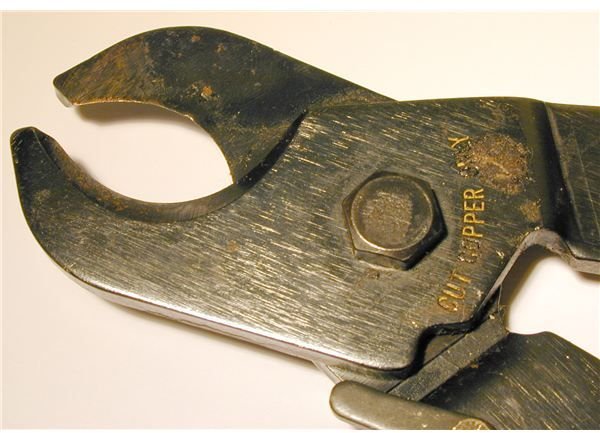How to Define Incremental Analysis: Explaining Alternative Solutions
Why is Mr. Peters Doubtful on the Howard Trading Offer?
How do you define incremental analysis? Mr. Peters, the plant supervisor, is doubtful about the production of 1,000 additional units of Mickey Bicycle spare parts ordered by Howard Trading. “Did you make an incremental analysis on that, Miss Vargas?” he asks the accountant. “The company might be losing on that offer because of the additional variable and fixed costs that will be incurred. If Howard offers to buy 2,000, we might have a little mark-up.
“I have submitted the incremental analysis to Mr. Stephens, and the members of the Board of Directors will decide on the matter this afternoon, Sir,” Miss Vargas replies.
Defining Incremental Analysis: Where is It Used?

.
Incremental Analysis is also called differential analysis wherein it is used to decide between available options to solve a certain issue. In deciding what option to choose, management considers the incremental revenues and incremental costs to determine the incremental profit.
Here are some examples of business situations in which the incremental analysis can be used:
- Making or buying parts or products.
- Selling products or processing them further.
- Eliminating or continuing a segment.
- Allocating scarce resources (creating a sales mix that can maximize profits).
In any of the above business opportunities, management will choose one of the two options by comparing the incremental profit.
How did Miss Vargas Prepared The Incremental Analysis?
The study made by Miss Vargas shows the comparison between two net income results of the Mickey Bicycle Manufacturing, Inc.: Under the two options considered, the decision will be to reject or accept the offer of Howard Trading in the production of 1,000 units of Mickey Bicycle spare parts: The accountant made two columns. One column shows the net income If the company rejects the offer, and the other one shows the net income if Mickey accepts the offer.
Let us take a look at the incremental analysis, the basis of the decision made by CEO Stephens.
Reject / Accept Difference
Increase / (Decrease)
Sales $87,500, $102,500, $15,000
Less: Costs and Expenses:
Materials $10,500, $13,500, $3,000
Labor $7,000, $9,000, $2,000
Factory Overhead:
Variable $10,500, $13,500, $3,000
Fixed $7,500, $7,500, 0
Selling and Administrative:
Variable $7,000, $7,000, 0
Fixed $11,250, $11,250, 0
Total Costs and Expenses $53,750, $61,750, $8,000
Income $33,750, $40,750, $7,000
The incremental analysis shown above depicts that the differences in revenues and costs are the most important figures to consider in making the decision. Based on the above illustration, we can say that if the company accepts the special order, its total revenue will be increased by $15,000. Though cost increases by $8,000, the incremental revenue will still be higher than the incremental costs, hence, the company gets an additional profit of $7,000; that is, if the special order is accepted.
The above format can be presented in another way below:
Incremental revenue (1,000 units multiplied by $15) $15,000
Less: Incremental costs:
Materials (1,000 units multiplied by $3) $3,000
Labor (1,000 units multiplied by $2) $2,000
Variable Overhead (1,000 multiplied by $3) $3,000 $8,000
Incremental Profit $7,000
Note that some cost items like selling, administrative expenses, and fixed overhead costs are not included in the analysis. This is because these costs are not expected to change in the future, regardless of whether the special order is accepted or rejected. Hence, these items cannot influence, in any way, the decision to be made.
Only those costs that are expected to change in the future, like the variable costs, are included in the analysis since those items are relevant in making the decisions. Therefore, the analyst should identify relevant items, particularlyrelevant cost, in order to facilitate the decision making.
Another kind of incremental analysis is utilized by Mickey Bicycle Manufacturing, Inc., in the following situation:
Continuing with the offer of Howard Trading, Mickey Bicycle CEO Stephens is thinking of buying the spare parts from a foreign supplier instead of producing them. The bicycle spare part designer has searched a new design on the web. This design is manufactured by a foreign bicycle spare part manufacturer.
Presented below are the two income statements of the two proposals–to buy or produce the spare parts:
If the company chooses to produce the parts, the following costs will be incurred:
Materials $3,000
Labor $2,000
Factory Overhead $3,000
Total Manufacturing Costs If Produced: $8,000
If the company buys the spare units, the purchase price of 1,000 units is $12,000
In deciding which option to choose, management will probably choose to produce the units because its costs is lower by $4,000. What must also be considered is the quality of the product. In this case, Micky Bicycle should also quantify the qualitative factor in order to decide.
Summary
An incremental analysis is a method that compares two or more alternative options in determining which of the options is the best for a certain situation.
The following details are included in the preparation of an incremental analysis:
- The comparison of the incremental profits of two or more alternatives is made. Usually, the option with the bigger incremental profit is chosen.
- In the preparation of an incremental analysis, only the relevant costs are included in the comparison. Most often, relevant costs that are included in the analysis are the variable costs. Variable costs are costs that vary with sales or production.
- Fixed costs that do not change under any operating level are not included. They remain constant under normal conditions.
- Qualitative factors are also considered in the decision making. Some of these factors are: customer preferences, product quality, economic condition, and other factors that affect the decision.
Book and Image Credits:
CPA Reviewer in Management Advisory Services, by Rodelio S. Roque, 2005 Edition.
www.freedigitalphotos.co.uk coneandrubish1676
www.freedigitalphotos.co.uk coppercutters2536
